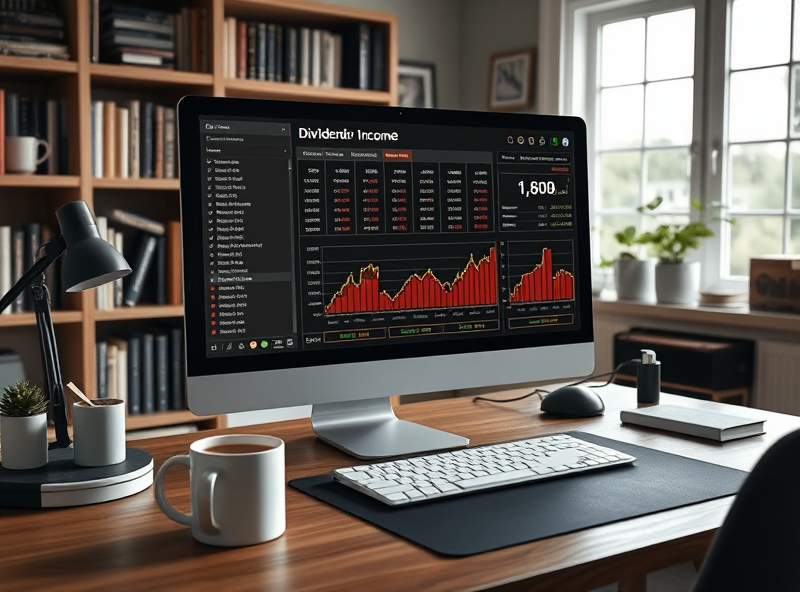
Dividend Stock Investing: How to Build Reliable Passive Income Every Month

Building a reliable stream of passive income through dividend stock investing is a time-tested strategy that has helped countless Americans achieve financial independence. Whether you’re planning for retirement, looking to supplement your income, or aiming to grow your wealth steadily, dividend stocks can play a vital role in your investment portfolio.
What Are Dividend Stocks?
Dividend stocks are shares of companies that regularly distribute a portion of their earnings to shareholders in the form of dividends. These payments are typically made quarterly, although some companies offer monthly dividends. Dividend-paying companies are often well-established, financially stable, and generate consistent cash flow. Examples include blue-chip companies like Johnson & Johnson, Procter & Gamble, and Coca-Cola.
Why Choose Dividend Stocks for Passive Income?
Dividend stocks offer a unique combination of income and growth. Unlike bonds, which provide fixed interest payments, dividend stocks can increase their payouts over time, especially if the company grows its earnings. This makes them an excellent hedge against inflation. Additionally, reinvesting dividends can significantly boost your total returns through the power of compounding.
Monthly vs. Quarterly Dividends
While most U.S. companies pay dividends quarterly, some Real Estate Investment Trusts (REITs), Business Development Companies (BDCs), and exchange-traded funds (ETFs) offer monthly dividends. Monthly dividend stocks can provide more consistent cash flow, which is especially helpful for retirees or those relying on investment income to cover monthly expenses.
Examples of monthly dividend payers include:
– Realty Income Corporation (Ticker: O)
– STAG Industrial (Ticker: STAG)
– Main Street Capital (Ticker: MAIN)
How to Start Investing in Dividend Stocks
1. Open a brokerage account: Choose a reputable U.S.-based brokerage like Fidelity, Charles Schwab, or Vanguard.
2. Research dividend-paying companies: Look for companies with a history of stable or growing dividends. The Dividend Aristocrats list (companies that have increased dividends for 25+ consecutive years) is a great place to start.
3. Evaluate dividend yield and payout ratio: A healthy dividend yield (typically 2–5%) and a sustainable payout ratio (under 60% for most sectors) are key indicators of a reliable dividend.
4. Diversify your portfolio: Spread your investments across different sectors to reduce risk.
5. Reinvest dividends: Use a Dividend Reinvestment Plan (DRIP) to automatically reinvest dividends and accelerate growth.
Tax Considerations for U.S. Investors
Dividends are generally taxed as either qualified or ordinary income. Qualified dividends are taxed at the lower capital gains rate, while non-qualified dividends are taxed at your ordinary income rate. Holding dividend stocks in tax-advantaged accounts like Roth IRAs or Traditional IRAs can help minimize your tax burden.
Risks and Things to Watch Out For
While dividend investing is relatively conservative, it’s not without risks:
– Dividend cuts: Companies may reduce or eliminate dividends during economic downturns.
– Interest rate sensitivity: High-yield stocks can be negatively affected by rising interest rates.
– Market volatility: Stock prices can fluctuate, impacting your portfolio value.
Always perform due diligence and consider working with a financial advisor if you’re unsure.
Creating a Monthly Dividend Income Plan
To generate monthly income, consider building a portfolio with a mix of stocks that pay dividends in different months. For example, combining companies that pay in January, February, and March ensures a steady stream of income each month. Alternatively, invest in ETFs that offer monthly payouts, such as:
– Global X SuperDividend ETF (SDIV)
– Invesco Preferred ETF (PGX)
– iShares Preferred and Income Securities ETF (PFF)
Resources for Research and Monitoring
– U.S. Securities and Exchange Commission (SEC): www.sec.gov
– FINRA: www.finra.org
– Dividend.com: Offers tools and information on dividend-paying stocks
– Yahoo Finance and Morningstar: For financial data and stock analysis
Conclusion
Dividend stock investing can be a powerful way to build reliable passive income every month. With careful planning, diversification, and a long-term mindset, you can create a steady income stream that supports your financial goals.
Disclaimer
This article is for informational purposes only and does not constitute financial, investment, or tax advice. Always consult with a licensed financial advisor or tax professional before making investment decisions. Investing in the stock market involves risk, including the potential loss of principal. Past performance is not indicative of future results.








답글 남기기